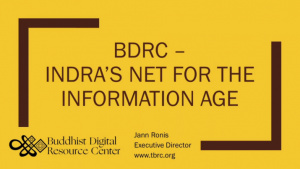
The Dhamma is not for dead people in old books. The Dhamma is to be experienced in the here and now, for those who understand.
The Thai monk Luang Phor Viriyang Sirintharo, who is 100 years old and still teaching actively in both Thailand and Canada, has said that insight meditation generates both mental and physical healing power.
While this may sound mysterious, the explanation is simple: a person who can control his mind through refining the practices of sila (Pali. morality) and sati (mindfulness) will not be as stressed in performing his daily tasks and will, therefore, be more positively balanced due to having more effective intentions in his mental and physical and actions and reactions.
On this point, Luang Phor Viriyang has said in his Instructions for Meditation Teachers: “The meditative mind at work is an effective rest which promotes positive thinking and management capability.”
Conversely, he also notes, “The movement which is the vibration of the brain can become severe on some occasions—and such severe moments can create severe impacts resulting in severe effects.”
We all know from experience how such severe mental movements can cause problems in life. Yet most so-called “normal people” pay little or no attention to the waves vibrating within their minds, and react with a lackadaisical attitude toward mindfulness, thus allowing the prevalence of arising mental stress to increase and become worse.
There are, fortunately, a few people with little dust in their eyes who have learned to cultivate mindfulness and equilibrium through the development of bhavana (mental cultivation), who are able to keep a cool head and whose mental-physical systems will not be affected in the way which we often see in people who are always losing their minds and their heads, and maybe even ending up with mental and physical health problems.
So how do we develop the contemplative mind that may bring us to a state of tranquility and equanimity to keep us from becoming mentally imbalanced?
Ajahn Viriyang teaches: “A tranquil state of mind reduces the workload of the nervous system and keeps it from being over-stressed.” (I. 91)
To explain, he provides a simile (I.102) which is that developing a tranquil mind “is comparable to the production of flour. Before we can get the flour, a number of processes are taken: from preparing the soil, to sewing the grain, watering, nourishing, spraying against pests and diseases, reaping, milling, grinding, etc., until it becomes flour. People can then measure the quantity of the flour and place its value at a certain degree.”
The refinement of flour can be compared to the refinement of the mind.
By comparison, Luang Phor says, “Long before the mind can control the meditative state, the meditator has to pass through a similar number of processes and mechanisms, from an initial state of developing a meditative mind and mindfulness . . . [gradually] . . . to a condition in which the mind may obtain tranquility.”
Continuing the simile of flour production, Luang Phor Viriyang explains that in a meditator who has become firm in his foundations of mindfulness, the mind becomes refined into a state of clear one-pointedness, in which it will not be distracted and hence not lose focus.
Meditators and monks, such as Luang Phor Viriyang, serve as modern, living examples of how this works in today’s world.
Luang Phor knows, however, that there are also many among us who might only be able to achieve one-pointedness temporarily, before then losing it through being distracted by sense perceptions, which, to use an analogy, would be comparable to pure flour being contaminated through touch-contact with impure fingertips.
If the mind is nourished in the stillness of tranquility and equanimity, it should be able to remain there. If, however, the meditator neglects to maintain proper concentration, the purity and value of mindfulness may deteriorate and fall away.
In those of us who are not yet free from mental distractions and are still striving to attain and maintain moral purity (sila); in those of us who are thus distracted by perceptions and consciousness of the eye, ear, nose, mouth. and touch, leading to arising related mental-associations and formations; in those of us who are thus distracted, the anchor of any calmness, tranquility, and equanimity we might have thus far developed and settled into can be unexpectedly turned and twisted by shifting winds and torn out of its seemingly secure anchor base.
Just as a good yachtsman is attentive when on anchor watch, so a good meditator must always be attentive and pay heed to human perception of the six sense base, which can be the enemy of tranquility and equanimity. The meditator must always pay attention that contact through the six senses does not make the meditator rip up and lose his secure base in anchoring calm through a welling up of sense perceptions and mental formations, leaving him drifting mindlessly in a welter of waves and currents. The stormy seas of the senses may even heave him into swirling emotive whirlpools that could readily suck him down into the overpowering undercurrents and nether worlds of the unhealthy mind from which, in some cases, there might be no escape.
It seems to be a well-kept secret that “sense perception” can be the enemy. And few appear to know that the secret strategy of mental defense against the harmful effects of the six senses is developing and maintaining mental detachment and equanimity that goes against the powerful and unpredictable undercurrents of the unwholesome, seamy, stream of the worldly world.
On the one hand, the worldly mind, when left unattended, has traditionally been compared to a jungle full of monkeys, jumping around every which way, without any sense of purpose or unity. By contrast, in the well-trained meditative mind, once attention has been focused, quelled, and controlled, will be at one-pointed peace, in a state of rest, in equanimity and harmony, free of desire and anxiety.
The problem for many of us, however, will be that whenever there is still some latent trace of hidden, unconscious desire or anxiety, we may remain adrift in resultant states of perplexity in which the mind will be unable to rest.
The way out of such mental perplexity is a through a gradual process of training.
References
Luang Phor Viriyang. 1999. Meditation Instructor Course. Bangkok: Willpower Institute (private printing of internal handout.)














